A canoe's shape and curves directly affect its stability, speed, and tracking. Some shapes are better for anglers, others for playboaters, others for all-around canoeists.
Review the basic design principles below to understand what canoe(s) will perform best for you and the waters you paddle.
Bottom Shape
Flat
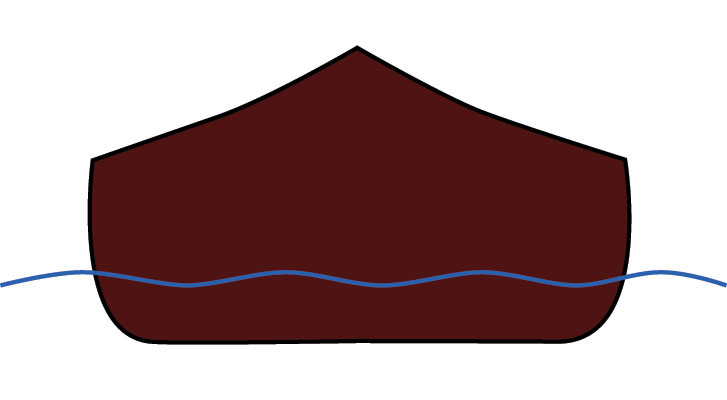
Flat bottom canoe
A canoe with a flat bottom will feel very stable initially. Sometimes this is a design choice, such as canoes designed for anglers who might want to stand. Also, many whitewater playboats employ a flat bottom, because it planes or surfs waves well.
Yet, a canoe with a flat bottom, when leaned, or in waves, will begin to feel very unstable quite quickly. This is because the transition from the bottom to the sides of the canoe, what is called “the turn of the bilge,” is more abrupt than one will find in a canoe with a shallow arch or rounded bottom. Also, a canoe designed with a flat bottom will be less rigid.
To compensate, designers consequently use more material or add other types of stiffening to the canoe, resulting in greater weight. Flat bottoms also slow down a canoe. Though you may be on vacation and the speed of your craft isn't your first consideration, its importance will become obvious when fighting a headwind on a windy lake.
Pros: Stable at rest, often used in canoes for anglers.
Cons: Slower than other types of bottoms, less stable when leaned, needs extra reinforcement during manufacture to obtain stiffness.
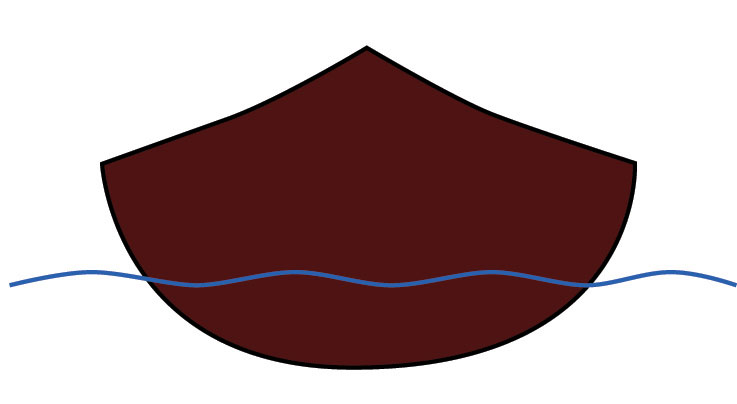
Rounded bottom canoe
Rounded
A canoe with a rounded bottom will be fast and will feel very unstable initially. That instability will not change dramatically as the canoe is leaned.
A canoe with flared sides will feel more stable as it is leaned, compared to a canoe with tumblehome or straight sides.
Pros: Fastest bottom type, can be very stiff depending on construction.
Cons: Feels unstable at rest and leaned.
Shallow Arch
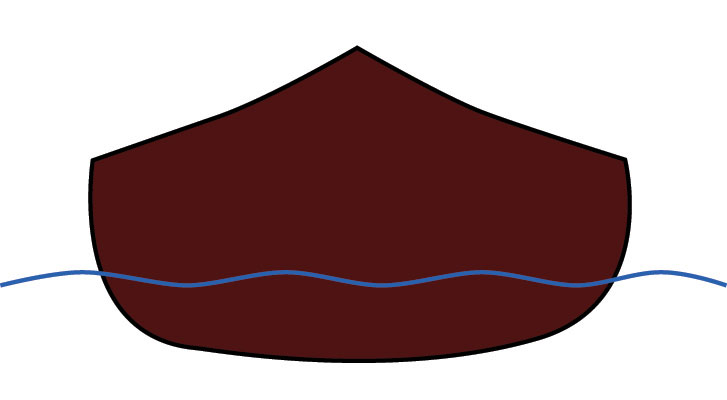
Shallow arch bottom canoe
The shallow arch bottom is the most common design found on canoes. Historically, most birch bark and wood and canvas canoes had shallow arch bottoms.
The shallow arch bottom feels somewhat less stable than a flat-bottom canoe, but more stable than a round-bottom canoe. A canoe with a shallow arch bottom will feel very secure when leaned, as the turn of the bilge is more gradual than in a flat-bottomed canoe. Speed is good with this type of bottom.
Although a compromise between the other bottom types, the shallow arch bottom performs well in a variety of conditions. That's why most experienced canoeists favor this bottom shape for a general-purpose canoe.
Pros: Most popular shape, fast, turns easily.
Cons: Feels less stable than flat bottom at rest.
Vee
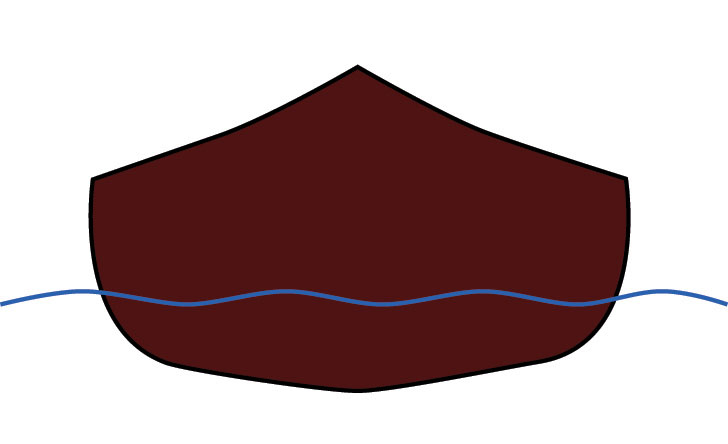
Vee bottomed canoe
Vee bottomed canoes are relative newcomers in canoe design, having only come into existence with the advent of canoes made from synthetic materials such as fiberglass and polyethylene.
At rest, they feel initially unstable. When leaned, the canoe quickly becomes more stable as one side or “flat” of the veed bottom comes into play. Leaned further, a canoe with a vee bottom will behave more like a canoe with a shallow arch bottom.
The vee bottom aids in tracking and speed, and contributes some stiffness to the canoe. However, the deepness of the vee increases the draft of the canoe, something to avoid on shallow lakes and rivers.
Pros: Moderate speed, fast shape, good tracking, stiff.
Cons: More difficult to turn than other bottom types, deeper draft can be an issue in very shallow water.
Curve
Tumblehome
Tumblehome is the inward curve of the sides of a canoe. It's a design technique employed to bring the sides of the canoe in at the gunnels so paddlers can reach the water more easily with a proper vertical forward stroke. This is particularly important for the bow paddler in a wide canoe.
Slight tumblehome is hardly noticeable when the canoe is leaned, but extreme tumblehome can result in a canoe that is unstable when leaned a great deal.
Flare
Flare is the opposite of tumblehome. The sides of the canoe with flare will continue to widen as they reach the gunnels. A canoe with flared sides will be very stable when leaned all the way to the gunnels.

Shouldered Tumblehome
Shouldered tumblehome is something that some canoe designers employ, especially in whitewater playboats. A canoe with shouldered tumblehome sides is flared until nearly at the gunnels, when it is brought inward to the gunnels. Sometimes this shouldered tumblehome is quite extreme. It allows designers to design a canoe that is very stable when leaned because of the flare, but with narrow beam at the paddling position.
Rocker
Rocker describes how much upward curve a canoe has on its bottom at the bow and stern.
Less rocker, almost a straight line, means that the canoe will track well, but will be more difficult to turn.
More rocker, upward curve, allows a canoe to turn easily, but it may not track as well. It also will have some impact on speed.
Canoes that have little rocker are more suitable for lake trips, while canoes with rocker of two inches or more will be more suitable for turning on rivers.
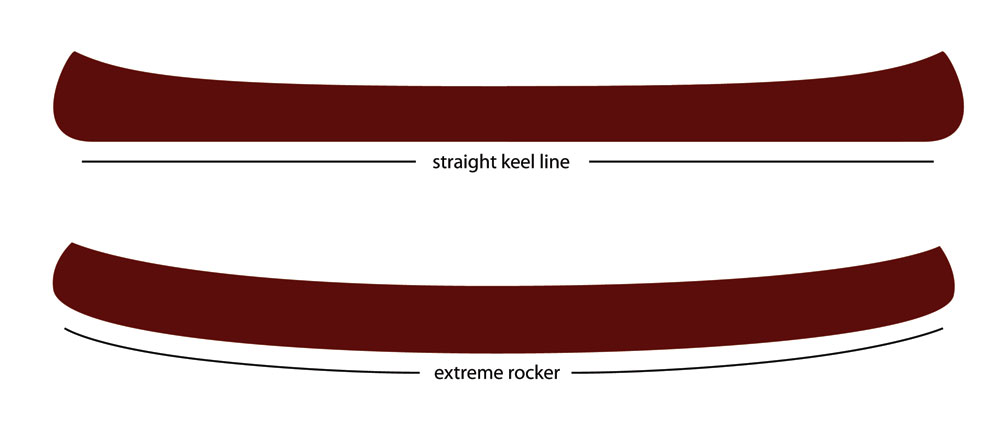
Keels and Keel Lines
A note on keel and keel lines. The keel line is the imaginary center line on the outside bottom of a canoe running from bow to stern. A flat keel line means less rocker, or curve. A curved keel line means more rocker.
However, some canoes have a keel, a raised ridge running along the center/keel line. Keels should be avoided on river canoes. Contrary to what you might think, keels are not there to make a canoe track. Rather, they often are an element to make the canoe stiffer. Properly designed, a quality canoe will not have a keel.
Canoe Design
Canoe design is a complex combination of science, craft, and art. Designers often will use a combination of various shapes. For example, I have a canoe that has a vee bottom at the extreme ends, but employs a shallow arch in its middle.
Dimensions of a typical tandem tripping canoe will be 15 to 17 feet long, 34 to 36 inches wide, and 13 to 15 inches deep in the middle. The bow and stern may be as high as 23 inches.
Beyond the specifics of what a dealer may tell you, or comparing the various dimensions of different canoes, the ultimate factor is taking your prospective canoe for a spin. Bear in mind that when you do, you most likely will have no gear in the boat. With a load, the canoe will be less lively, more akin to a truck than a sports car.
Listen to the experienced voices of canoe dealers and rental outfitters when considering what shape canoe to get for your outings, but understand the basics of how design affects your canoe's performance.
See also:
Choosing Your Canoe: Materials »
Gear Explained: Parts of a Canoe »
Canoe Reviews and Information»
(Illustrations by Sarah Lampe)

 by Erich Volkstorf
by Erich Volkstorf









